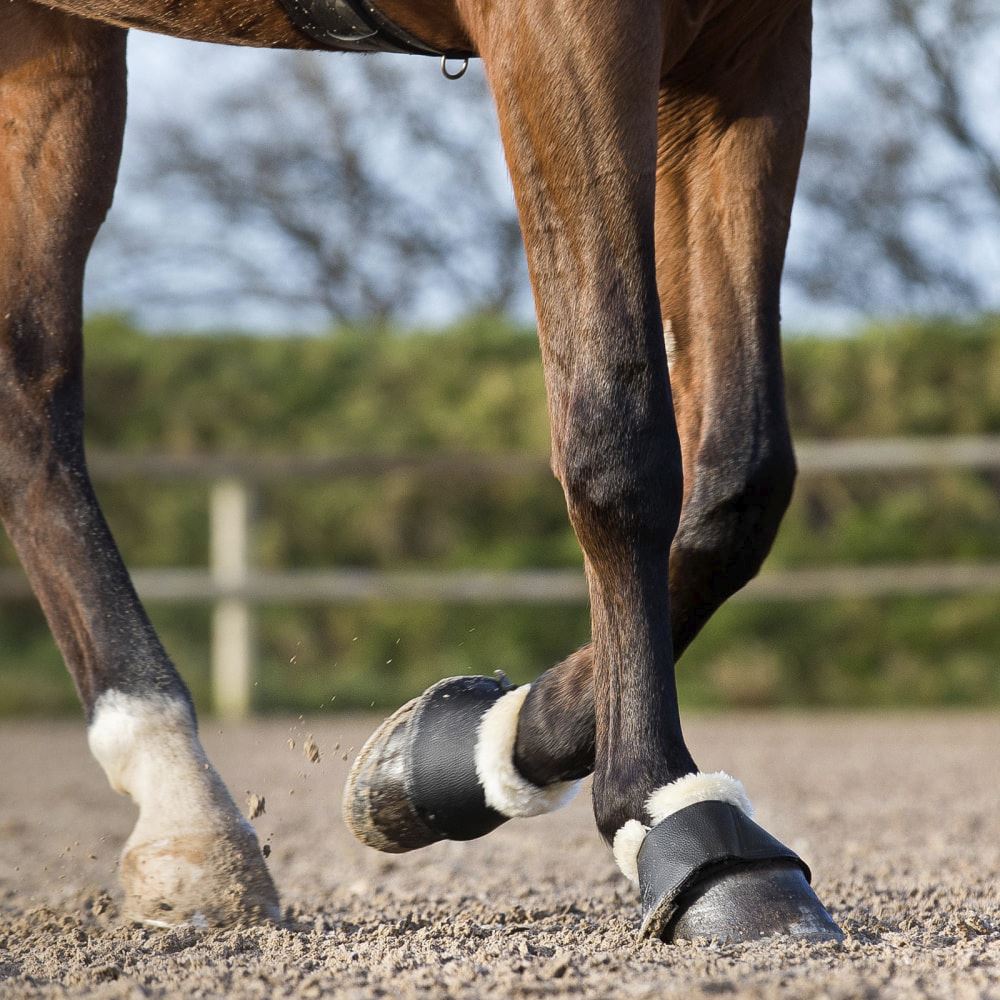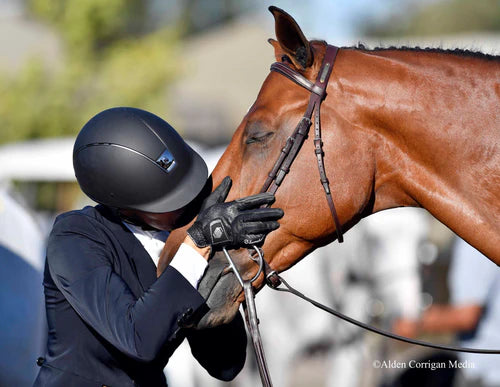While you’re riding your horse, do you ever hear the sound of your horses’ hind shoes catching on their front shoes? You may also notice it while your horse is turned out and running around rambunctiously. Bell boots can also make a great addition to shipping boots for added hoof protection. Any of these cases would be an instance where you may want to consider bell boots:
When does my horse need to wear bell boots? Some horses only require them while riding or while turned out. Others may live in their bell boots day and night. It will depend on a few factors. If your horse is boarded, some facilities may offer “on/off” services with items like bell boots. Some boarding facilities, oftentimes the larger ones, may not have the time to do this with every individual horse and may prefer/request to leave bell boots on 24/7. If your horse lives in a wet/muddy environment, you may be best suited with boots you can easily remove and clean to avoid bacterial infections such as mud fever.
The overall purpose of bell boots or overreach boots are to protect the heel/bulb area of your horse and prevent the likelihood of shoes being ripped off.
Let’s talk types of bell boots. There are many different options to consider, each with their own pros and cons.
If you plan on taking bell boots on and off on a daily basis, consider a Velcro closure. The Velcro closure will allow for more convenience and time efficiency. However, the Velcro is usually the first part of the bell boot to break if your horse is at all rough on them. If your horse requires bell boots in turnout, the Velcro may not hold up long-term.
If you plan on leaving bell boots on more long-term, pull on may be the best choice. For a horse that requires bell boots while riding and while turned out, pull on may be easiest. You don’t have to worry about the Velcro closure breaking and making the boot unusable. Pull-on bell boots can still tear and break but typically they are a bit hardier. It can take some finesse to get a pull-on bell boot on, but with some soapy water you should be able to slip it on!
There is another style of bell boot known as the “no-turn” overreach boot. This particular style of bell boot is fit and styled a bit differently. These are a tighter fitting boot with a bulb notch to keep the boot in place. Due to the tight-fitting nature of this boot, it is not intended to be worn long term. If your horse needs a bell boot for turnout, this style may not be the best choice because of difference of material. The material is constructed to absorb impact from hind striking hooves, not necessarily to keep from grabbing shoes. These are typically Velcro closure and may not touch the ground or cover the back of the shoe. These boots cover the horse's pastern, coronary band and hoof wall down to the heel, helping to protect this sensitive area from injury while riding.
How do I know what size to get?
To fit your horse for bell boots, have them stand square on even ground. With the bell boot on, it should just barely be touching the ground behind their heel. Be sure it is fully covering the back edge of their shoe. Lead your horse a few steps and make sure it continues to have good coverage while they are moving. You should also be able to fit a finger in the top cuff of the bell boot to ensure it is not too tight around their pastern. Different styles of bell boots may sit differently on your horse. Your horse may not be the same size in different styles or brands of bell boots.
Shop our wide selection of bell boots and equine leg protection to find the perfect solution for your horse.






